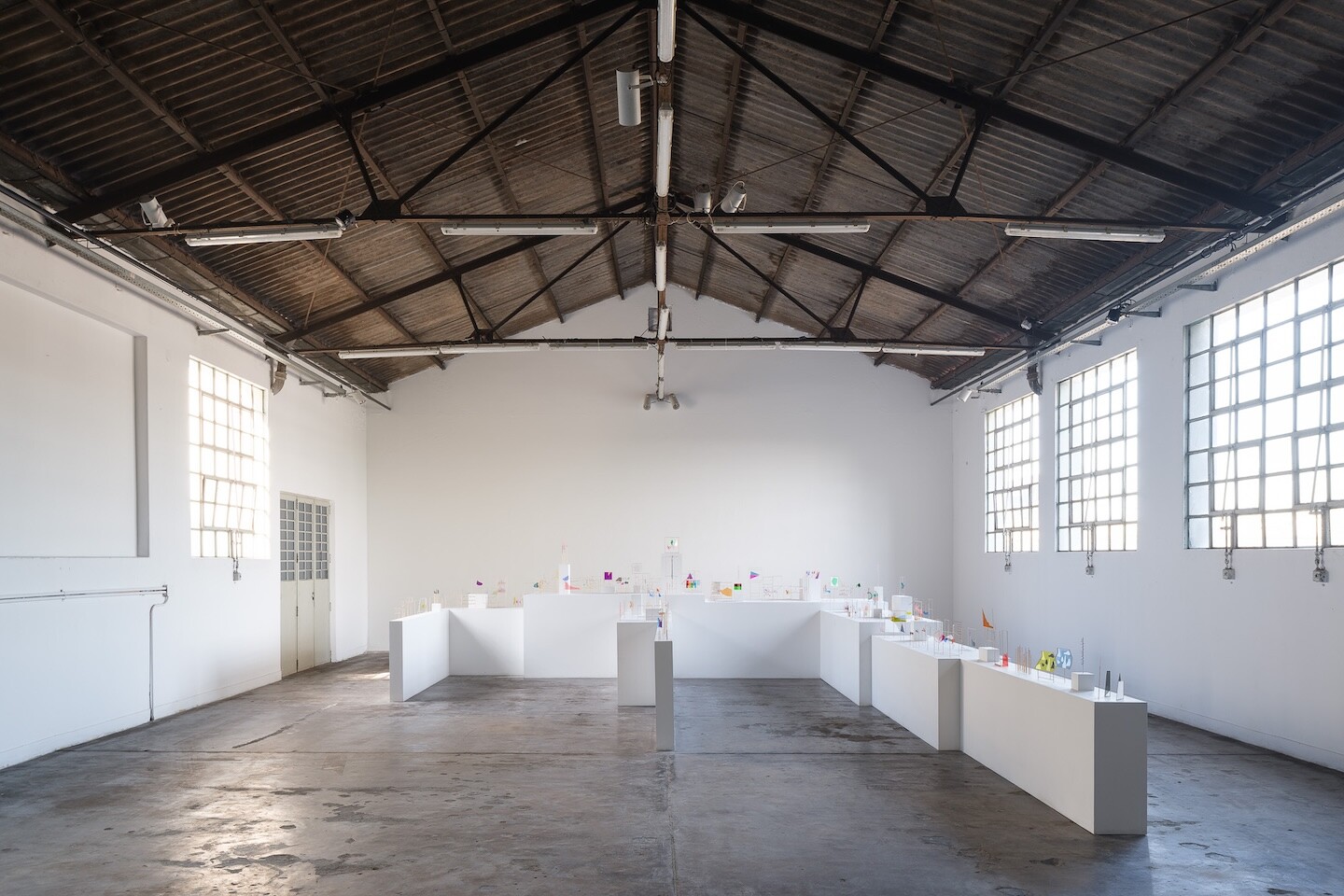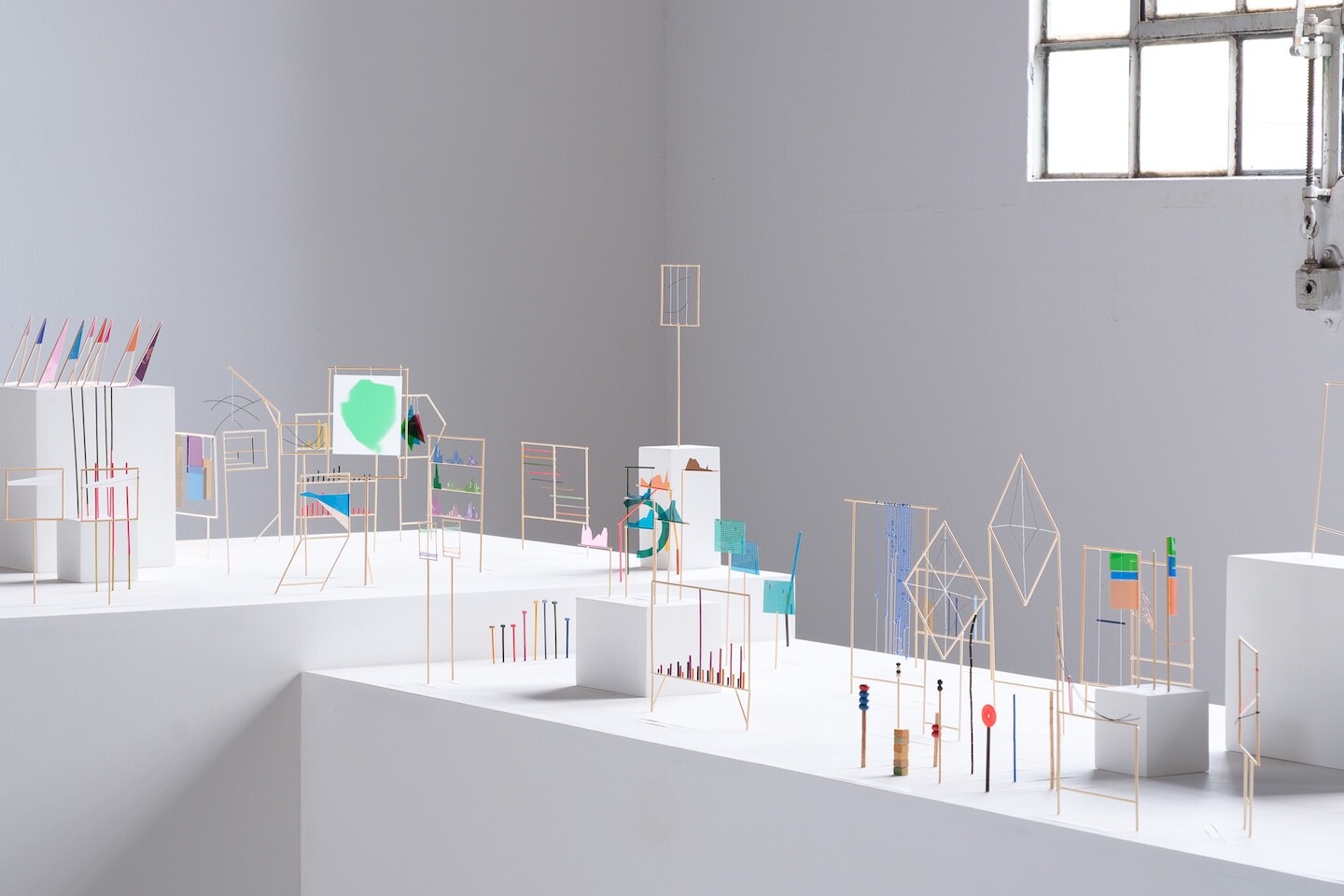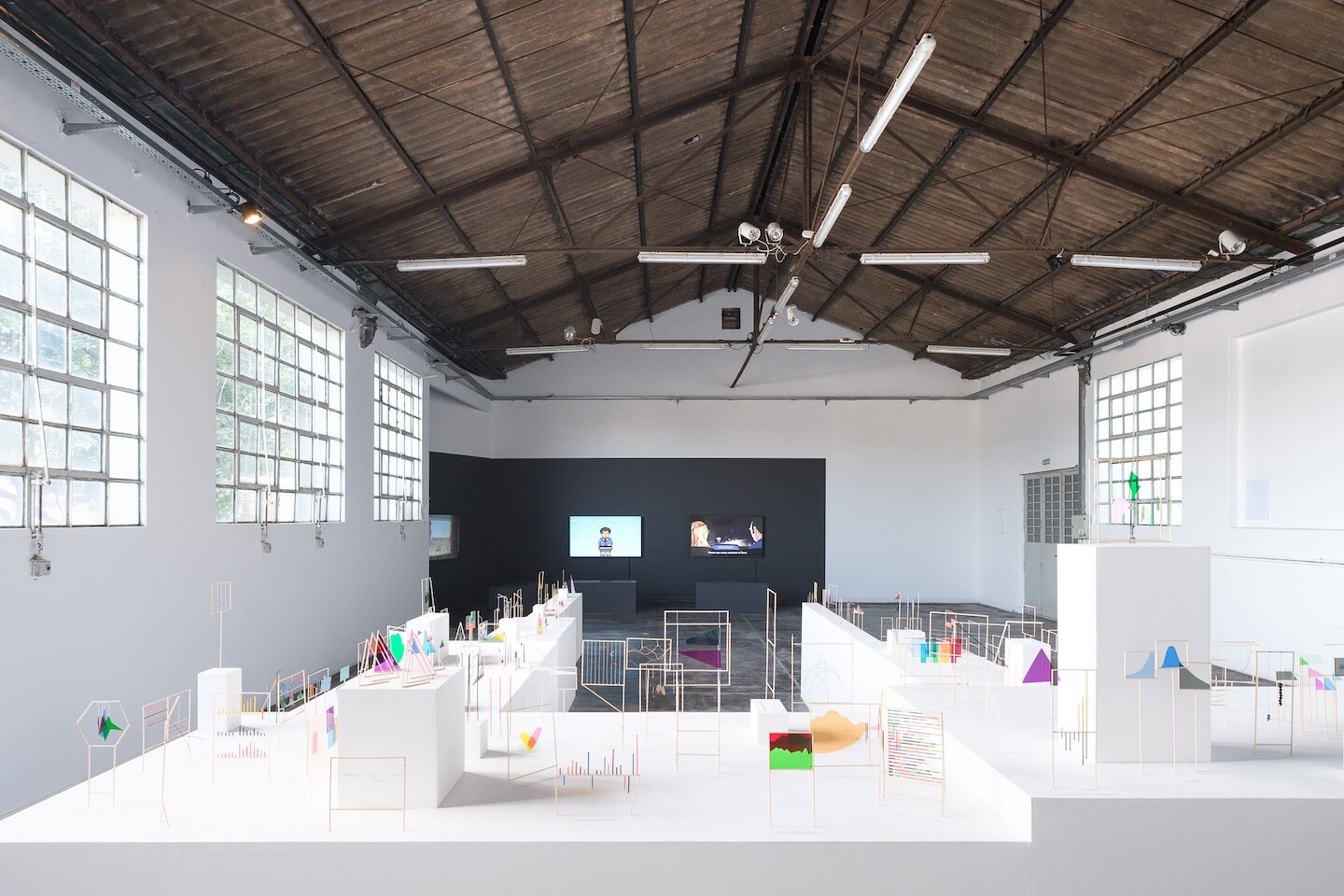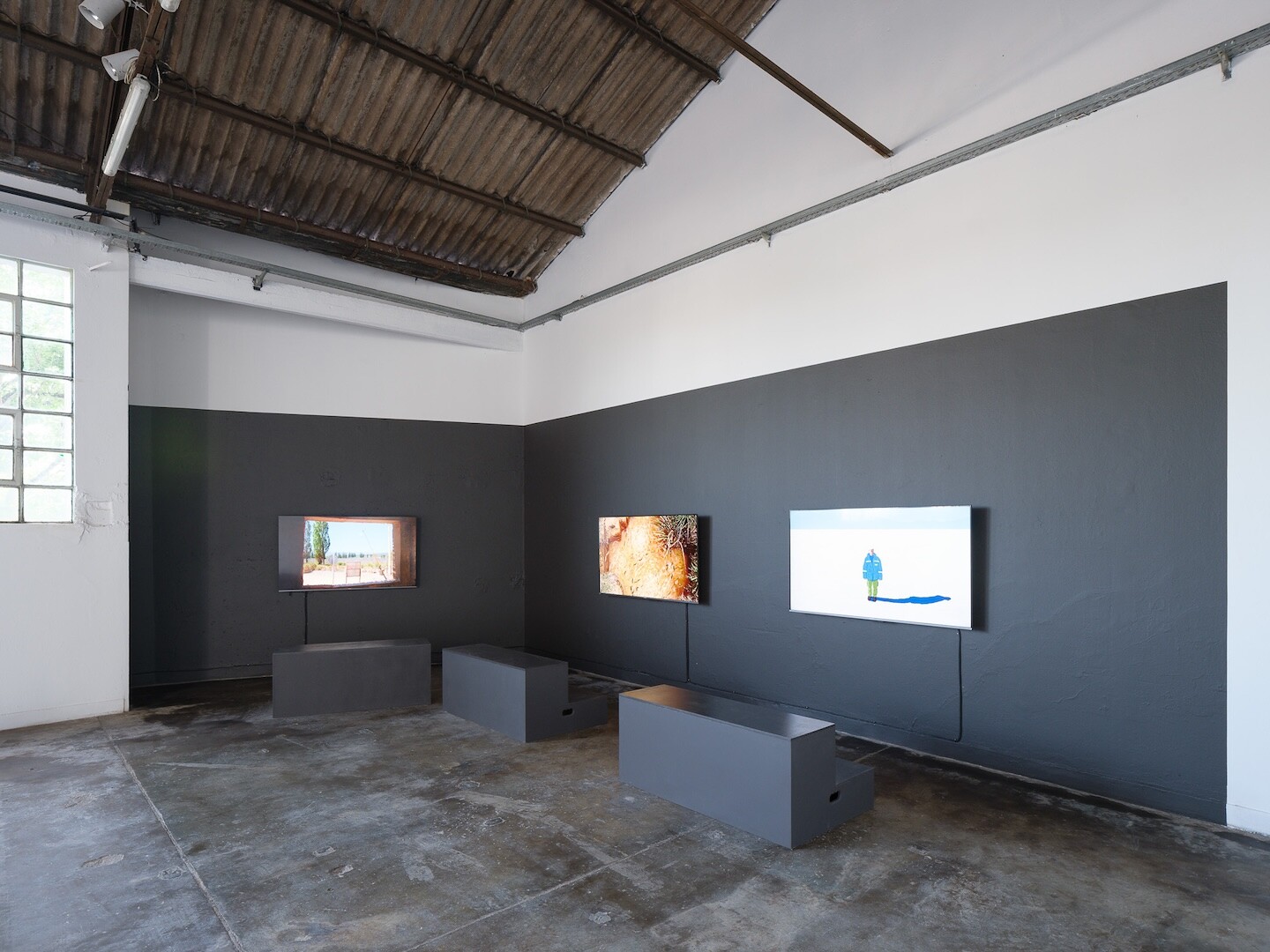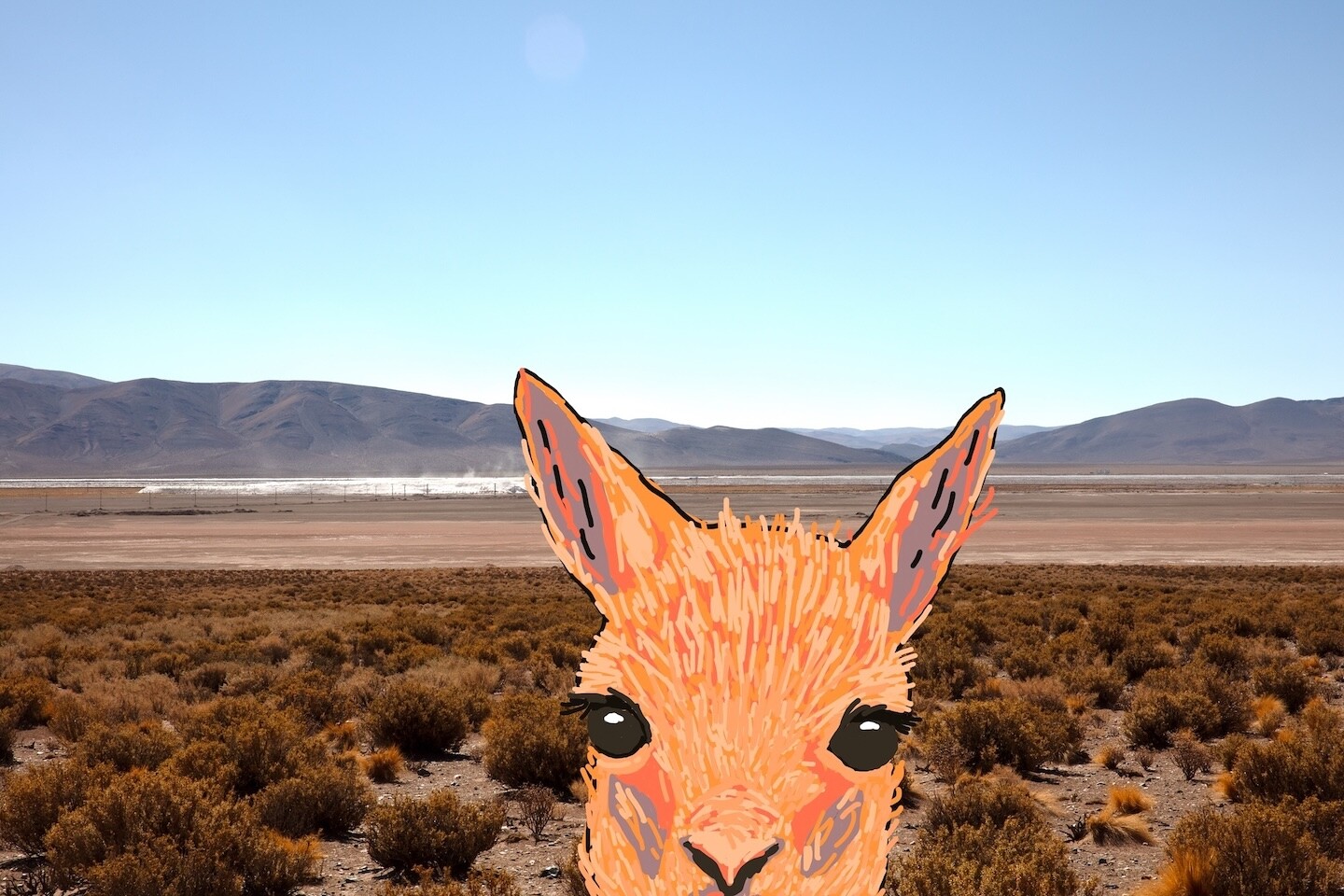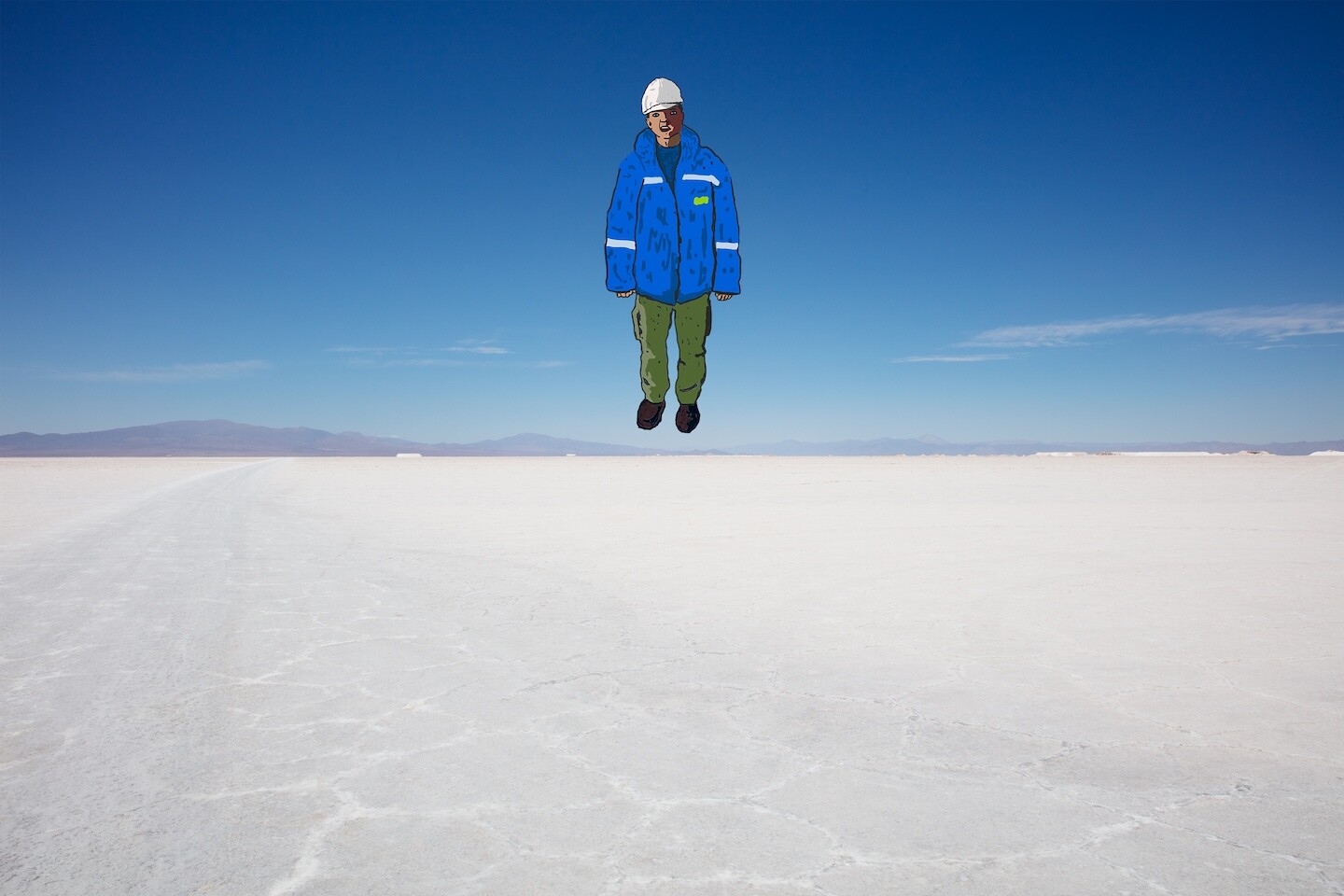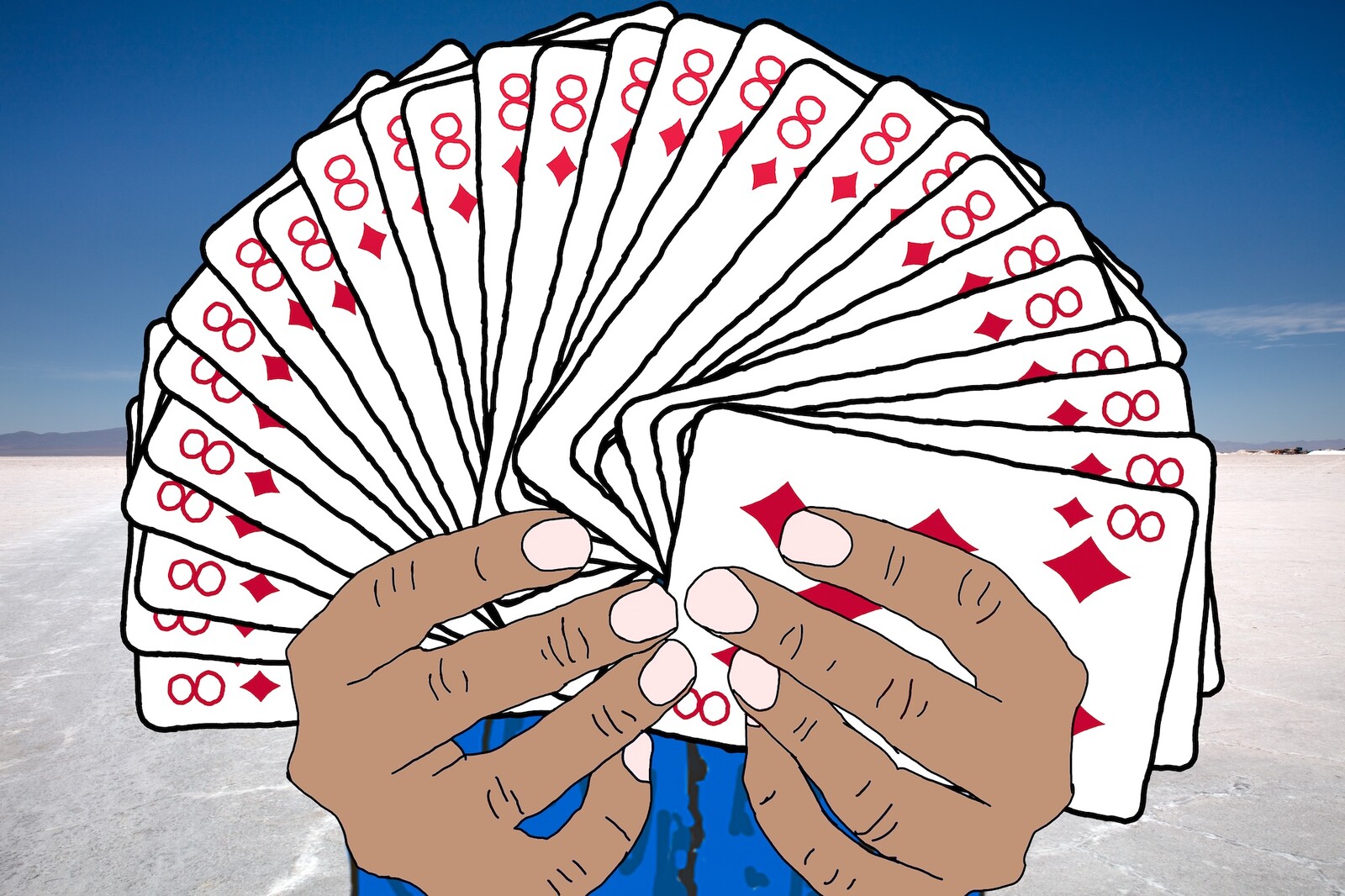Convertirse en piedra (Turning to Stone)
March 22–May 24, 2025
Iguazú 451
C1437ETE Cdad. Autónoma de Buenos Aires
Argentina
Co-curators: Sylvie Fortin and Solana Molina Viamonte
Performative and exploratory, Turning to Stone relies on assemblage as an artistic and philosophical approach. Ibghy and Lemmens aggregate matter, images, words, and space-time to immerse viewers in a multisensorial reconsideration of the contested notions of energy “transition” and sustainability. Inflecting criticality with humor, the exhibition also contextualizes the financialization of the climate and biodiversity crises in relation to the sweeping shift in valuation spearheaded by the ascendant economics of “natural capital.” We are living a paradigm shift, a global reconfiguration in which capitalism’s insatiable expansion no longer relies mainly on labor or production. Ours is a neo-feudal capitalist era, defined by the marriage of magical thinking and savagery. Valuation is now a speech act, with many casualties.
The multi-channel installation An Animated Assembly layers animation and “documentary” footage, inviting visitors to consider the relationship between energy decarbonization, sacrifice zones, and green energy economy. Enlisting three screens, it welcomes us into a polyphonic gathering: a constellation of entities with varying roles and stakes in the greening of transportation. We encounter characters rendered in low-tech, at times obsolete and game-like animations, including North American hybrid car owners, a Canadian elected official, the Argentina-based CEO of an international mining company, a garita, a vicuña, and water. They take turns onscreen, drawing viewers to see the world afresh through their reflexive lens.
The installation Tales from the Subterrenean stages small, colorful assemblages and their handwritten titles on a monumental base. Model-like, the abstract, handmade sculptures are materializations of the 2D graphs, charts, maps, and schemes developed to represent ascendant modes of natural-resource valuation. These are the legitimacy-granting tales through which contemporary scientists, policy advisors, and economists float prospective modes of natural-resource valuation, naturalize them, and script our unfolding futures for capture. Each model bears a title, which refers to the original caption of its source graph. These titles do with language what the sculptures do with matter.
The installation’s sculptural base—a monumental assemblage of variously sized rectangles—evokes a graph, a toppled three-tower edifice, or an uppercase “E” with strokes extending (or retracting) in space. Its scale and solidity echo the “authority” of economic discourse and give material form to its ideological drive.
Oscillating between image, object, and architecture, the base also choreographs our moves through space. Its long sides—its stem and strokes—convene us to sequential, processional viewing. We take in a few of the 200 loquacious sculptures at a time, one small and fragile work after the other. We adjust our perception to their colloquy. We consider the relationships between form, material, and title, and pick up on the joke. Spontaneous thoughts get into the mix. Moving toward the center of the structure—the belly of this installation—we are surrounded on three sides, cradled, brought into a sweeping, multilateral, and vibrant conversation carried by bamboo sticks, thread, acetate, paper, glue and their dancing shadows. This dance, like the base’s implied scalability, also conveys advance and retreat, and a situated agility: its current form is temporary and site-responsive.
Tales from the Subterrenean hosts an infinite reservoir of possible configurations that may well be the foundation of a much-needed “otherworld,” which is succinctly charted in the exhibition’s epilogue, Natural Capital Matrix. This vectorial, fungible work manifests here as a lead-on-paper drawing. It offers up a cartesian grid of “fuckness” representing the world along economic-ecological axes. This is the lose-lose scenario (encapsulated by the repeated use of the expletive) that power wants people to accept. But there remains much space around the grid, undrawn or perhaps awaiting those able to read invisible ink. This is the space of struggle and imagination.
Turning to Stone was initiated by Transitive Properties, a long-term curatorial research project ideated and developed by Sylvie Fortin to examine economics and finance’s debt to hospitality.
About Móvil
Móvil is an independent, non-profit organization dedicated to research and experimentation and committed to bringing emerging practices to diverse audiences. Supporting the production and the presentation of risk-taking contemporary art projects, Móvil plays a crucial and unique role in the local and national arts ecology.
Our main objective is to enable artists and curators to conceive and carry out ambitious, new site-related projects that propel their practice and significantly impact their artistic trajectory. Over the years, Móvil has supported artists (financially, logistically, and/or curatorially) to develop and produce projects on a scale previously not available to them. These ambitious projects have, in turn, marked a turning point for the artists, propelling many onto wider stages in South America and beyond.
Hours: Saturday 4–8pm

